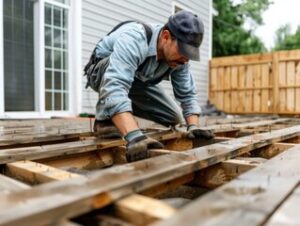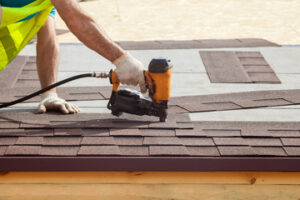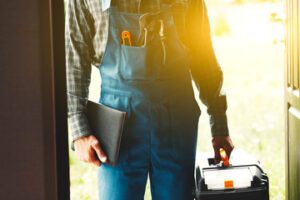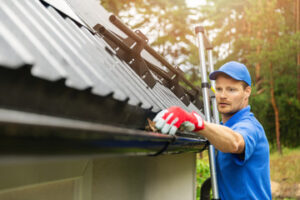Pianos are expensive musical instruments that require special care during moving. Hiring professional movers can help protect your piano during transportation and reduce the risk of damage.

Piano Movers Denver have experience maneuvering large items in tight spaces. This is important because homes often have small hallways and stairways that can be difficult to navigate with a large item like a piano.
Professional piano movers have the experience and equipment necessary to ensure safe and secure transportation of your cherished instrument. They understand the complexities of moving large and heavy objects and are able to maneuver them through tight spaces without damaging walls, doors, or floors. They also have access to specialized tools and climate-controlled trucks that protect the instrument during transport.
In the rare event that damage occurs, your piano movers will be covered by insurance, protecting you from costly repair bills. This is particularly important when you’re shipping an expensive item like a piano, which can easily cost thousands of dollars to repair or replace.
When choosing a piano mover, be sure to inquire about their insurance policy and the types of coverage available. Ask about the deductible, coverage limits, and other policy details. It’s also a good idea to compare multiple quotes from different companies to find the best price and coverage.
Specialized items like safes, billiard tables, and hot tubs require specialized care to prevent damage during the move process. Attempting to move these objects yourself can result in serious injury, not to mention expensive damages to your property. Fortunately, professional movers can handle these items safely and quickly. They can even save you time by handling the entire process, from disassembly and packing to transportation and reassembly.
Aside from reducing the risk of injury, hiring a professional moving service can save you time and money by eliminating the need to rent specialized equipment. In addition, a reputable piano moving company will have clear protocols in place for handling damages, ensuring transparency and peace of mind throughout the relocation.
The most valuable benefit of hiring piano movers is the peace of mind they provide. Whether you’re moving a grand or upright piano, they have the tools and knowledge to transport your instrument safely and efficiently. This helps to minimize the risks of damage, and it allows you to enjoy your new home without worrying about a priceless asset. In addition, a fully insured mover is more likely to be reliable and trustworthy, demonstrating a dedication to accountability and professionalism.
Experience
Piano moving requires high levels of skill, technique and knowledge. Hence, it is better to go with the professional movers than trying to do the job on your own. Besides, the professionals are familiar with the layout of your house and can help you move things in a way that will not harm your piano or other precious items. They can also offer you storage solutions for your piano while you are arranging for the shipment to another location.
Besides having the right tools, good piano movers also use specialized equipment to protect your instrument during the move. They should have special dollies, straps and piano cradles to ensure that the piano does not damage during the relocation process. They can also provide you with binding cost estimates so that there are no surprises during the move. This will save you from getting ripped off by the movers.
You should also look for a piano moving company that has years of experience in the industry. They should have a great reputation and a large client base. The company should also be licensed and insured to ensure that they provide quality services. In addition, they should be able to handle the specific needs of different types of pianos. For example, they should have the experience to handle both upright and grand pianos.
People are often concerned about the price of hiring piano movers. However, it is important to consider the total costs involved in moving a piano. The intangible costs include stress, property damage and the cost of repairing the piano. Moreover, the damage may affect your property’s value. Therefore, it is best to hire a professional piano mover to avoid these expenses.
Mountain Piano Moving is a Denver-based piano moving company that has over 30 years of experience. They specialize in local moves and long-distance trips within Colorado State. They also provide storage, removal and tuning. Their team focuses on safe transport and customer satisfaction. They are dedicated to protecting the sentimental and financial value of their clients’ pianos. They also offer a free consultation to understand the layout of your home and its specific requirements.
Time
If you’re in the market for movers to help move your piano, it’s important to consider their experience. The right movers will have the skills to safely move your prized instrument from one home to another, no matter its size or location. They will know how to navigate difficult spaces and will have the proper tools to protect your piano from damage, such as padded blankets and custom straps. They will also have a truck with dollies and ramps to make the process as smooth as possible.
Pianos are large instruments that can be challenging to maneuver through doorways and other areas of your home. Attempting to move them without the help of professionals can result in costly repairs to walls, doors, and stairs. This is why it’s always best to hire a team of professional piano movers.
The movers on the Moving Help marketplace have extensive experience in moving pianos and will take the time to carefully plan the move. They will measure hallways, doorways, and stairs to ensure that the piano can fit through them without causing any damage. They will also have the necessary equipment to maneuver your piano through these tricky spaces, including a crane for hoisting your instrument over flights of stairs.
In addition to the physical aspects of moving a piano, the movers on the Moving Help marketplace have years of experience in providing customer service. This means that they will work efficiently and will be able to answer any questions you might have about the process. They will also be able to provide you with a detailed quote before beginning the job, so you can rest assured that your piano will be in good hands.
Pianos have many intricate moving parts that can be damaged by improper handling during a move. This can cause costly repairs to the piano’s internal mechanisms, such as the hammers and action mechanism. Professional piano movers are trained to minimize the stress on these components, which will help them maintain their functionality after the move is complete. This will prevent expensive repair bills and keep your piano in good working condition.
Safety
Pianos are intricate instruments that are sensitive to movement, temperature, and humidity. They can be easily damaged during a move, and this can lead to expensive repairs in the long run. Hiring professional movers who understand the intricacies of piano moving can help ensure a safe relocation without any damage to the instrument.
During a move, it is essential that the piano movers maintain balance and stability while handling the instrument. This can be achieved by distributing the weight evenly among team members. Additionally, movers should work in sync and follow verbal cues from an assigned leader to prevent accidents. They should also use the proper tools and equipment to transport the piano safely.
Another important safety measure is ensuring that the path to be taken by the piano is clear of any obstacles. This will allow the movers to maneuver the instrument more efficiently and prevent any injuries during the relocation. It is crucial to measure doorways, hallways, and staircases in order to determine whether the piano can fit through these areas. If necessary, movers can temporarily remove doors or use other special tools to navigate these areas.
Professional movers take several precautions to protect the piano from harm during transportation. They use quilted blankets to wrap the instrument, and they place additional padding in specific areas that are susceptible to damage. They also utilize climate-controlled trucks to control temperature and humidity, which is vital for preserving the condition of the piano.
While it is important to protect the piano during a move, it is also important to protect the movers and the rest of the household. This includes putting away any pets and securing children during the relocation process. This will reduce the risk of accidents and injuries during the process, and it will help keep the movers focused on the task at hand.
Finally, movers should prepare the piano by disassembling it and packing it carefully. This will minimize the risk of damaging parts such as the legs or pedals, and it will make reassembly easier at the new location. In addition, they should also pack all accessories and ancillary items, such as music books, in boxes that are specially designed for them.








